14 Best Substitutes for Xanthan Gum in Cooking and Baking
Getting ready to start your recipe and realize you are out of xanthan gum? If you are a gluten-free cook, it is important to know what substitute for xanthan gum will work best in your recipe. Here, I list the important properties of xanthan gum alternatives to help you decide which one is the best replacement in your recipe.
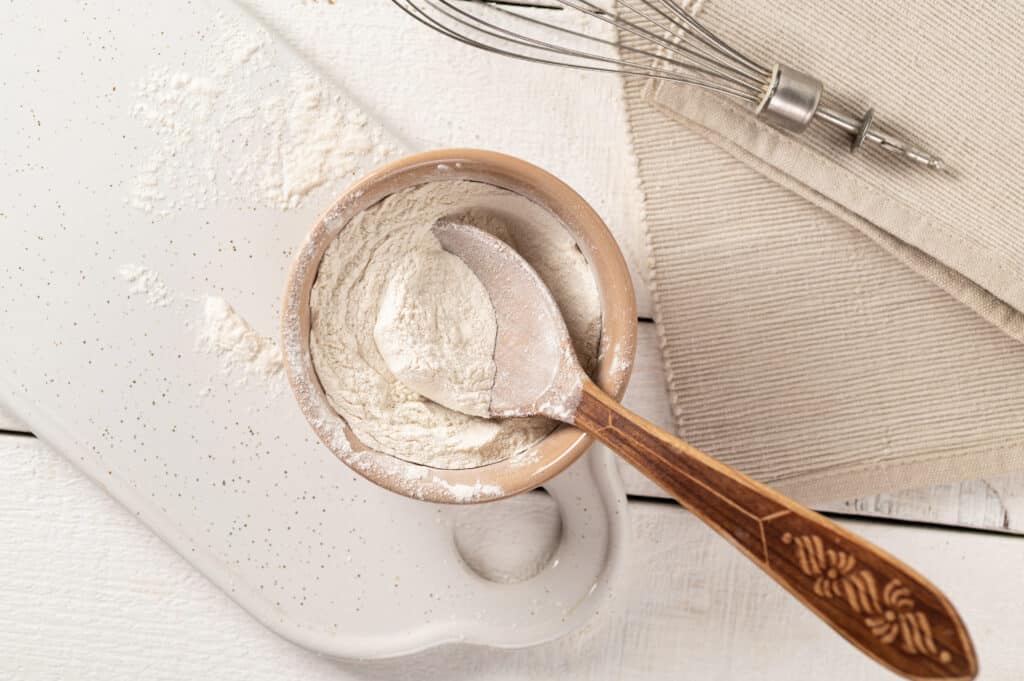
Table of Contents
Why you may need an alternative:
- You have run out of xanthan gum and need a quick sub to complete your recipe.
- You think xanthan gum is upsetting your stomach.
- You want an ingredient that does the job better than xanthan gum.
Understanding Xanthan Gum
What is xanthan gum?
Xanthan gum is a powder made from the fermented sugar of corn, soy, and wheat. It may seem odd that a product derived from wheat can still be safe to use in gluten free cooking, but because it is a byproduct, it is completely safe and gluten free!
What purpose does it serve in recipes?
Xanthan Gum is mostly used in gluten-free and low carb recipes in order to replace wheat based flour. But there are also three other ways that xanthan gum can improve a recipe.
- Thickener: Xanthan gum can be used to thicken a recipe. Things like gravies, soups, and stews all need a starchy element to help them come together and give a good mouthfeel. Some substitutes are things like tapioca starch, potato starch, corn starch and rice starch.
- Emulsifier (binder): All this means is that xanthan gum helps bring ingredients that don’t like each other together. Such as oil and water. This helps give your baked goods a nice crumb and sturdy, but airy structure. Some alternatives to xanthan gum to help emulsify your baked goods are sweet rice flour, guar gum, ground flax, and ground chia seeds.
Example: Think of when you make a vinaigrette. You need to add something like mustard to bring the oil and vinegar together. Mustard in this case would be an emulsifier.
- Stabilizer (keeps from separating): A stabilizer also helps keep ingredients together, but it works with the water content in the recipe by increasing the viscosity (or thickness) of some of the water based ingredients.
This also helps retain moisture in baked goods. Stabilization is needed for things like ice cream, sauces and dressings so they stay smooth and easy to pour. Stabilizers are things like agar agar, pectin and gelatin.
Who knew we were going to have a chemistry lesson today right?! But if you want to be a good baker and recipe maker then knowing why ingredients work the way they do in a recipe is very important.
And this knowledge will help you choose the best replacement for xanthan gum if you ever run out.
What to look for in a xanthan gum replacement
The best alternatives for xanthan gum will depend on why xanthan gum is used being used in your recipe.
- Is it used as a thickener such as in soups or sauces?
- Is it used to emulsify and bring the recipe together such as in baked goods and batters?
- Or is it needed as a stabilizer to keep the ingredients in sauces or dressings from separating?
Here are my recommendations for the best xanthan gum alternatives.
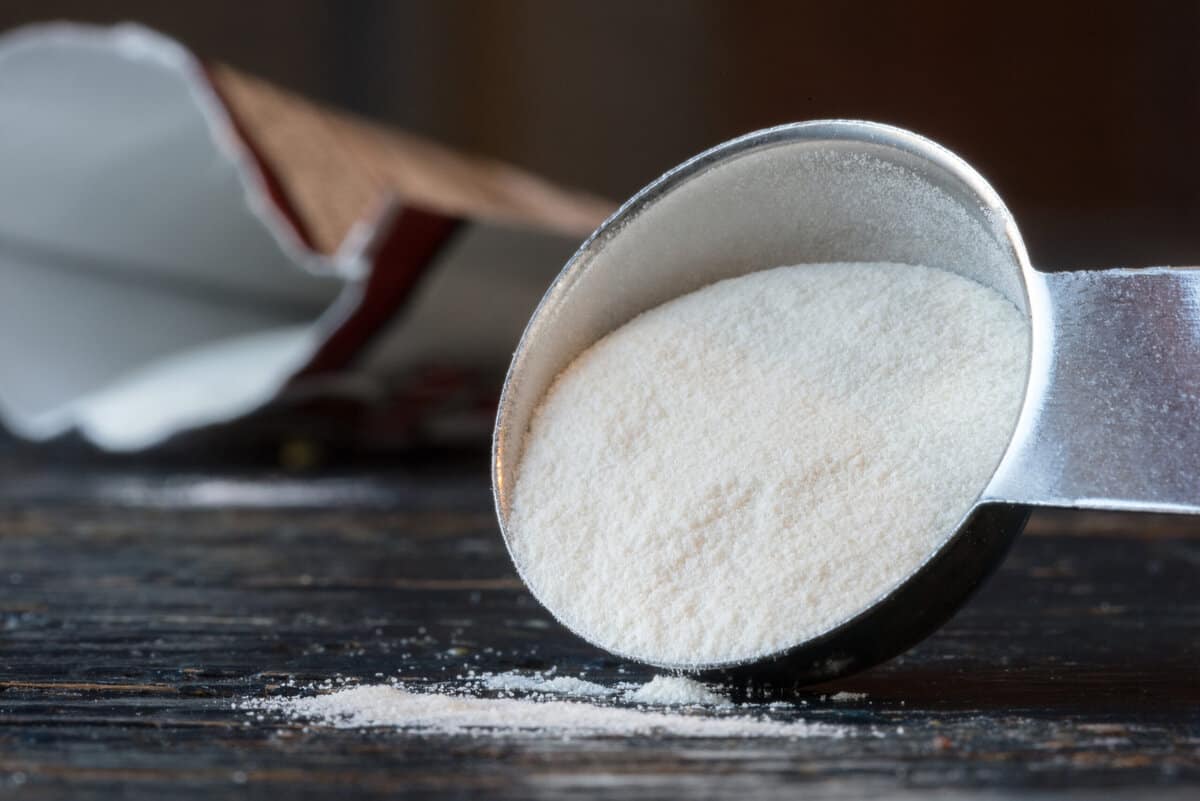
14 Best Xanthan Gum Substitutes
- Corn Starch
Best used for: Thickening of soups, sauces, gravies, fruit fillings, jellies
Corn starch can be found in most households and is easy to find at the local supermarket. But besides being easy to find, I have put it first on the list because it is an exceptionally good gluten-free thickener and replacement for xanthan gum.
Keep in mind that as a cold slurry, cornstarch and water will not stay mixed together. But once added to a recipe and cooked, this thickening agent can bring a whole pot of soup together into a stew with just 1-2 Tablespoons of cornstarch.
To use: Make a slurry by combining 1 tbsp cornstarch + 1 tbsp cold water and mixing the two ingredients together well. Stir into your hot soup, sauce or gravy and allow to cook until thickened. If you want your recipe even thicker, add another batch of cornstarch slurry to the pot.

- Rice Flour
Best used for: Creating a roux to thicken recipes, emulsifying and stabilizing (binding) baked goods.
If you are a gluten free cook, then most likely you have used rice flour and may even have it in your pantry right now. Rice flour is just ground up rice that can be used one of two ways when cooking.
First, it can replace xanthan gum in baked goods when used alongside other whole grain flours. The wet, almost gluey consistency of the rice flour helps hold ingredients together and also helps create a gluten-like texture to help bread rise and have a nice crumb.
Second, rice flour can be used instead of xanthan gum in a gluten-free roux. However, a typical xanthan gum roux needs only a little amount to make it work, where rice flour would need equal parts fat and flour to make the roux.
To use: Add equal parts fat to rice flour and cook before adding your hot liquid.
Professional tip: you may also want to try sweet rice flour which is made from long and short grain rice, like sticky rice, and therefore has a slightly more sticky texture. It is also known as glutinous rice flour, though there is actually no gluten in it.
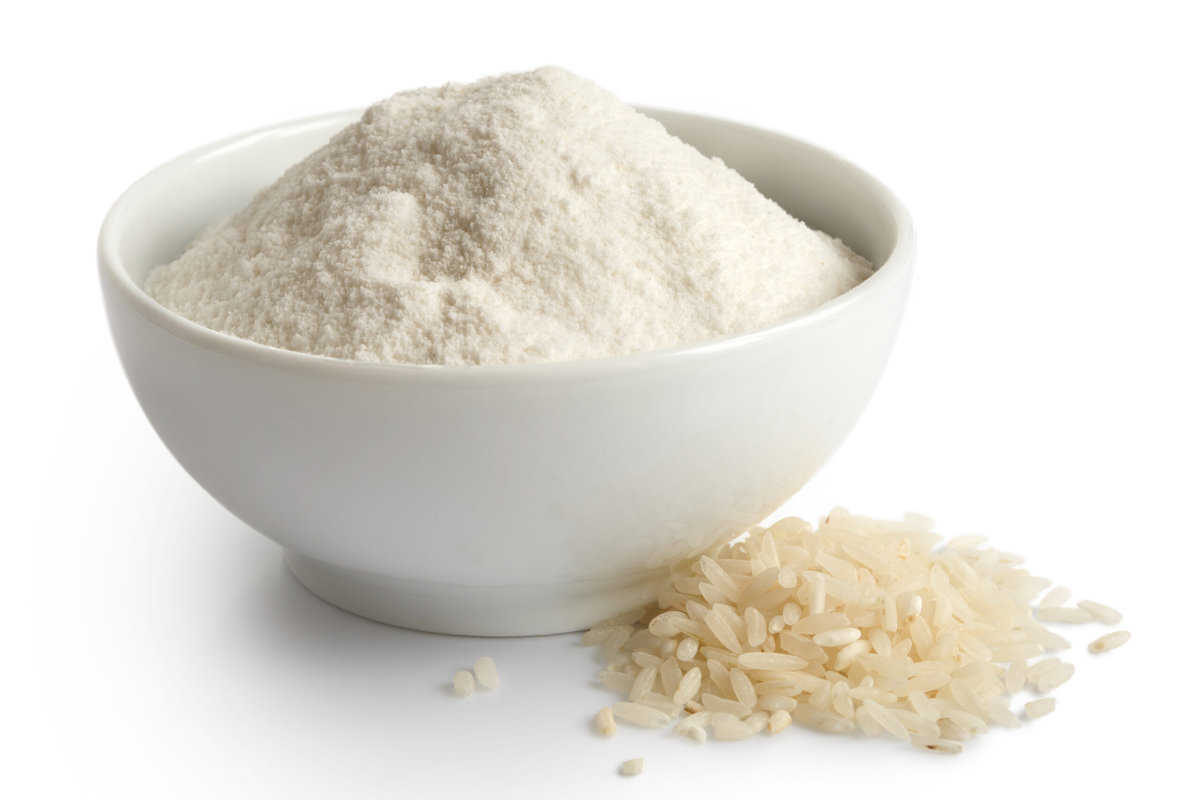
- Psyllium husk
Best used for: Thickener for soups, stews, sauces, gravies, jellies, fruit fillings and salad dressings; Binding agent in baked goods; Stabilizer in ice cream, yogurt.
Psyllium husk is a very versatile ingredient in the kitchen, just like xanthan gum. it can function as a thickener, an emulsifier (binder), and a stabilizer. So having this in your pantry can definitely save a recipe that needs xanthan gum when you don’t have it.
Another benefit to psyllium husk is that it is high in fibre and therefore will increase the fibre content when added to any dish.
To use: Add ½ tsp at a time. Wait for thickening and then add more if needed.

- Chia seeds
Best used for: Emulsifying baked goods.
Have you ever made chia pudding? Then you may be familiar with how the tiny seeds, when soaked in liquid, create a jelly layer around themselves. Well that jelly layer is what is going to help stabilize your baked goods when you switch xanthan gum out for chia seeds in your recipe.
Unless you want the crunchy texture from the seeds in your recipe, I recommend using ground chia seeds. In order to use them in a recipe, you will have to do a little work beforehand.
To use: Combine 1 tbsp ground chia seeds with 2 tbsp hot water; soak 10-15 minutes. Then use the soaked chia seeds in a 1:1 ratio for xanthan gum in your baked goods.

- Ground flax
Best used for: Emulsifying baked goods
Similar to how you would use chia seeds to stabilize your baked goods, ground flax helps thicken and bind your ingredients together as well. Keep in mind that using ground flax instead of xanthan gum can add a slightly nutty flavor to your baking and also cause a slightly grainy texture.
Like chia seeds, there is some prep work that needs to be done before the ground flax can be used in your recipe.
To use: Stir together 1 part ground flaxseed with twice as much hot water for every 1 part xanthan gum. In other words, if you need ¼ tsp xanthan gum, then you would need ¼ tsp ground flax plus ½ tsp hot water. Allow the ground flax to soak for about 10 minutes before using.
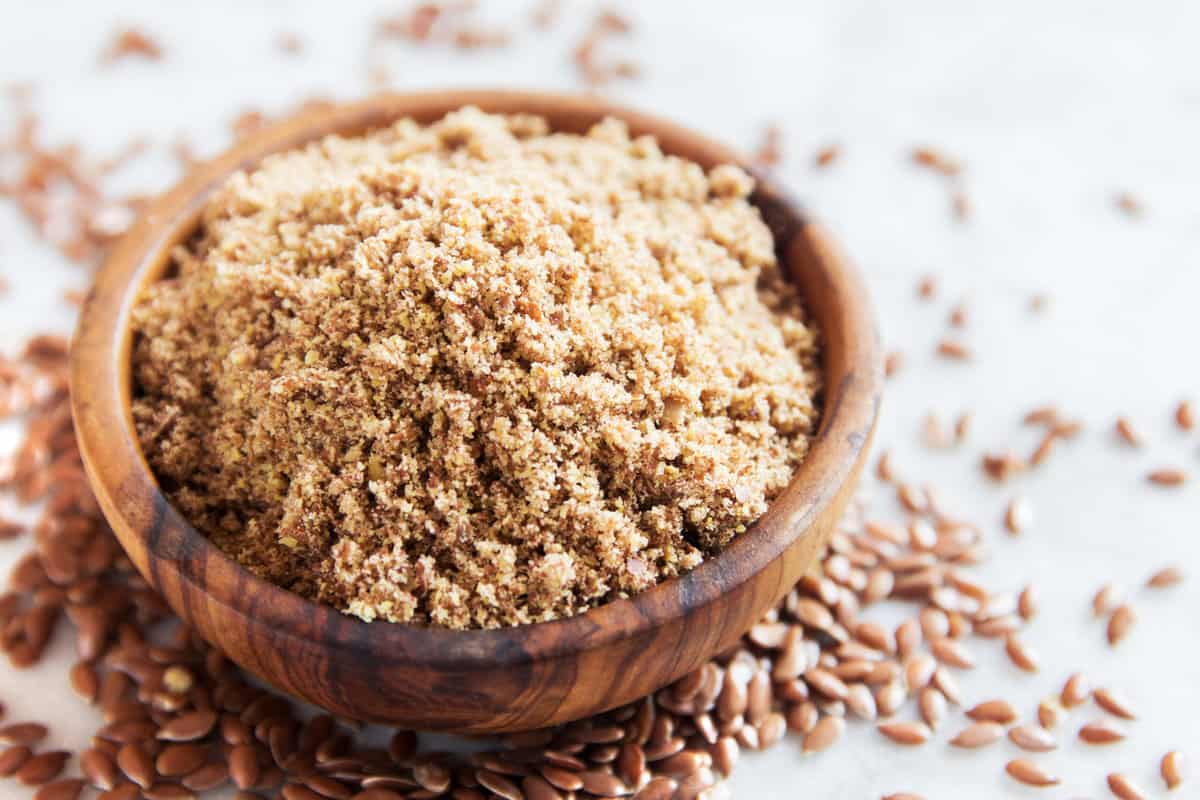
- Unflavored gelatin
Best used for: Stabilizing in things like meringues, jellies, and puddings.
Unflavored gelatin can help bind ingredients and hold moisture in your baked goods when using things like pudding and jelly layers. Make sure you dissolve gelatin in water before using. Gelatin is not vegan or vegetarian friendly.
To use: Dissolve gelatin as instructed on the package. Use 1 tbsp gelatin for every 1 tsp of xanthan gum.

- Egg whites
Best used for: Emulsifying baked goods and stabilizing baked goods.
Egg whites are a great binding and rising agent which is why they are used in many baking recipes. Egg whites can help give your cakes and cookies and nice airy feel and also help bring together custard or meringue.
Egg whites are a great substitute for xanthan gum when in a pinch. But keep in mind that egg whites may change the texture of your crumb and they are not vegan friendly.
To use: 1 egg white will replace 1 tbsp of xanthan gum.
- Agar agar
Best used for: Binding ingredients and stabilizing baked goods.
Agar agar is a great option for replacing xanthan gum when you need a stabilizer. It works similarly to gelatin in a recipe, however gelatin is made out of animal products where Agar is made from red algae making it vegan and vegetarian friendly. This vegan form of gelatin can be used to bring together jellies, custards, and puddings.
To use: Dissolve as instructed on the package and then use the dissolved agar agar at a 1:1 ratio for the xanthan gum in a recipe.

- Guar gum
Best used for: Emulsifier and stabilizer in baked goods
Guar gum is a plant based fibre that absorbs water to thicken recipes like baked goods and is regularly used in gluten-free baking. It functions similarly to xanthan gum and psyllium husk since they are all forms of plant fibre. When added to baked goods, the guar gum creates a gelatinous material that helps bind your baked goods, making the crumb light and airy. As a stabilizer, you can use guar gum to stabilize jellies, jams, puddings and more.
To use: Use 3 parts guar gum for every 2 parts xanthan gum in a recipe.

- Konjac powder
Best used for: Thickening gravy, stew, soup, jellies, and more. Emulsifying pasta.
Konjac powder is often used in place of cornstarch. It has a viscosity (thickness) that is 10 times higher than cornstarch, making it a great thickening agent.
Konjac can also be used as an emulsifying agent when making pasta. It creates a tougher crumb, so it is not recommended for things like cakes, cookies and bread.
To use: Use 1 tsp konjac powder for every 1 tsp xanthan gum. You may need to adjust by adding extra konjac powder if you feel you need more thickening.
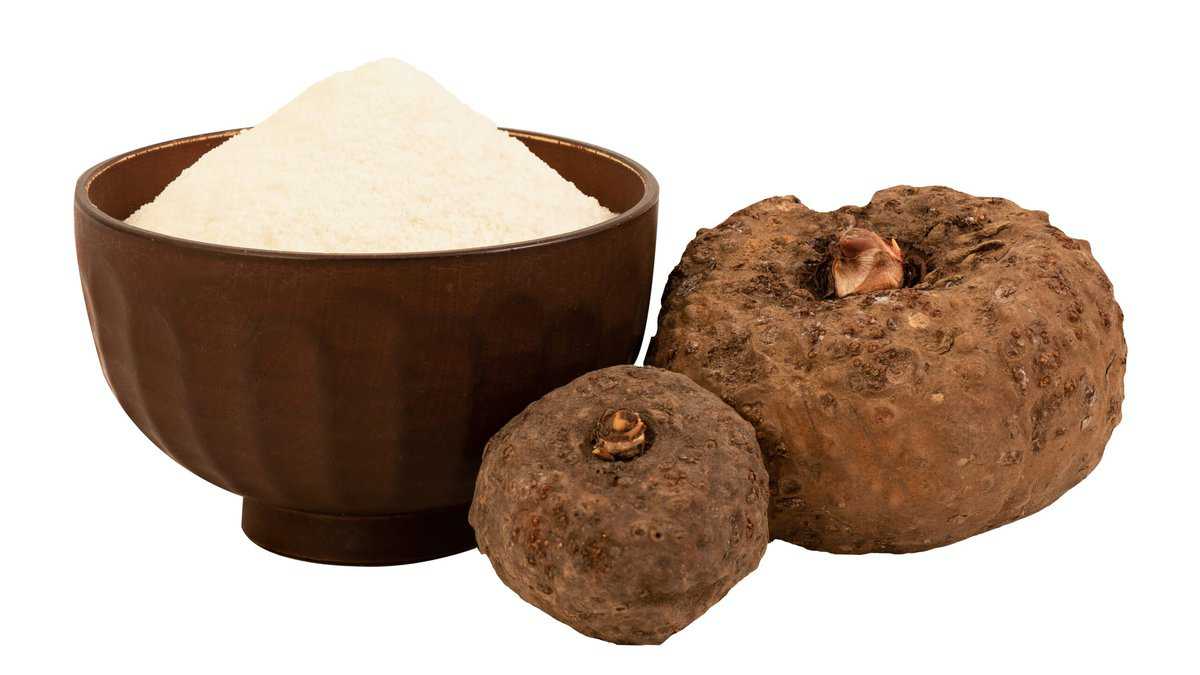
- Arrowroot Flour
Best used for: Thickening agent for soups, stews, jellies and more.
Arrowroot flour can be a great xanthan gum alternative in a pinch. As a thickener, you will need to add more arrowroot to your recipe than you would of xanthan gum.
Arrowroot flour can also be used to replace xanthan gum when it is being used as the flour in a recipe. Arrowroot will create a nice crumb in cakes, cookies and other baked goods.
To use: 1 tbsp arrowroot : 1 tsp Xanthan gum.
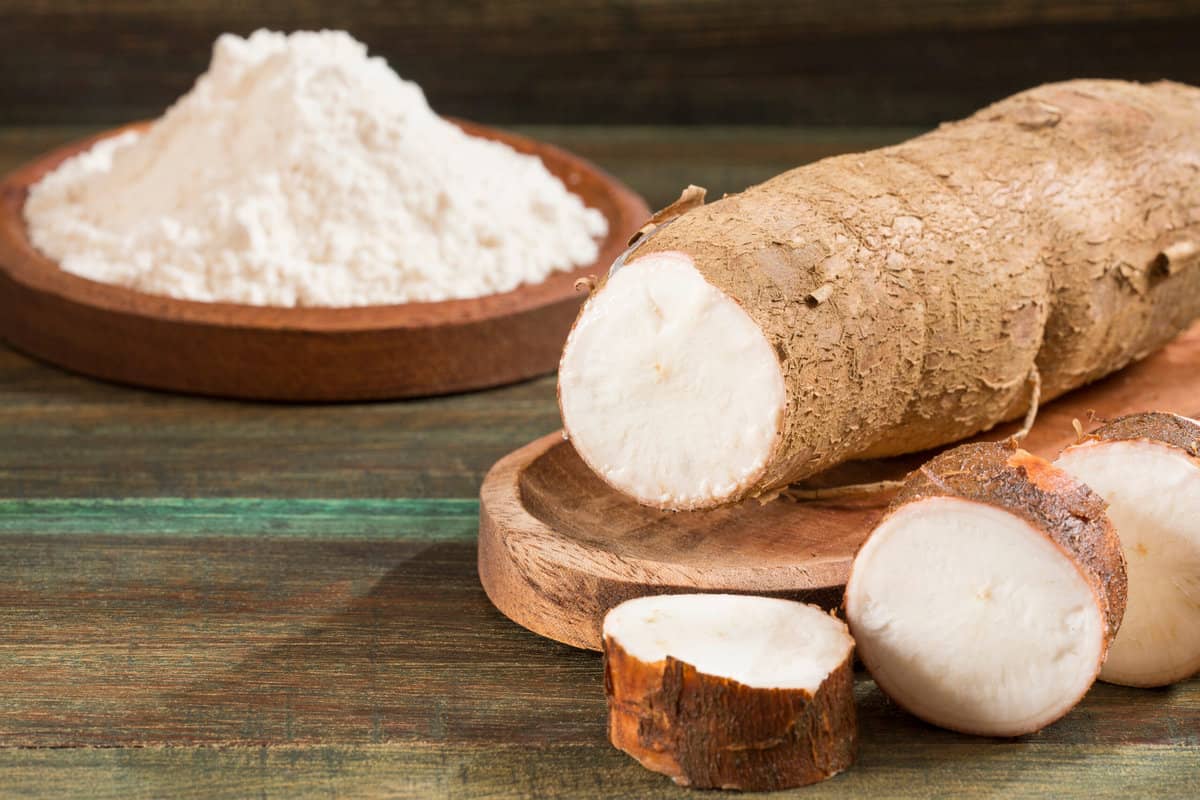
- Okra
Best used for: Thickening sauces and stabilizing jellies, jams and gravies.
Okra is often used in the South for making Gumbo. It is added for its natural thickening properties. On its own, okra powder can be used to help thicken soups, stews, sauces, jellies, and other recipes.
When combined with rice flour, okra powder can help gluten-free baked goods trap air to proof, creating a nice crumb.
To use: Add a small amount to thicken and then add more as needed to increase thickening. When baking, there are no set measurements so this would be trial and error.

- Filé sassafras
Best used for: Thickener for soups, stews, gumbo.
Filé sassafras is a great thickener replacement for xanthan gum. This thickener is made from ground sassafras leaves, and while it is a great thickener, it may be difficult to find.
To use: Add a small amount to thicken and then add more as needed to increase thickening.
- Pectin
Best used for: Thickening and stabilizing jams and jellies.
Pectin is a form of fibre found in fruits. It is most often used when making jams and jellies. It can create a gel that is similar to a guar gum or agar agar, making it great for baked goods as well.
Keep in mind that pectin can be somewhat difficult to work with since its properties can change based on the amount of sugar and acidity in a recipe.
To use: Add 2% of pectin to the total weight of flour when baking. For instance, if you are using 500 grams of flour, you would use 10 grams of pectin.
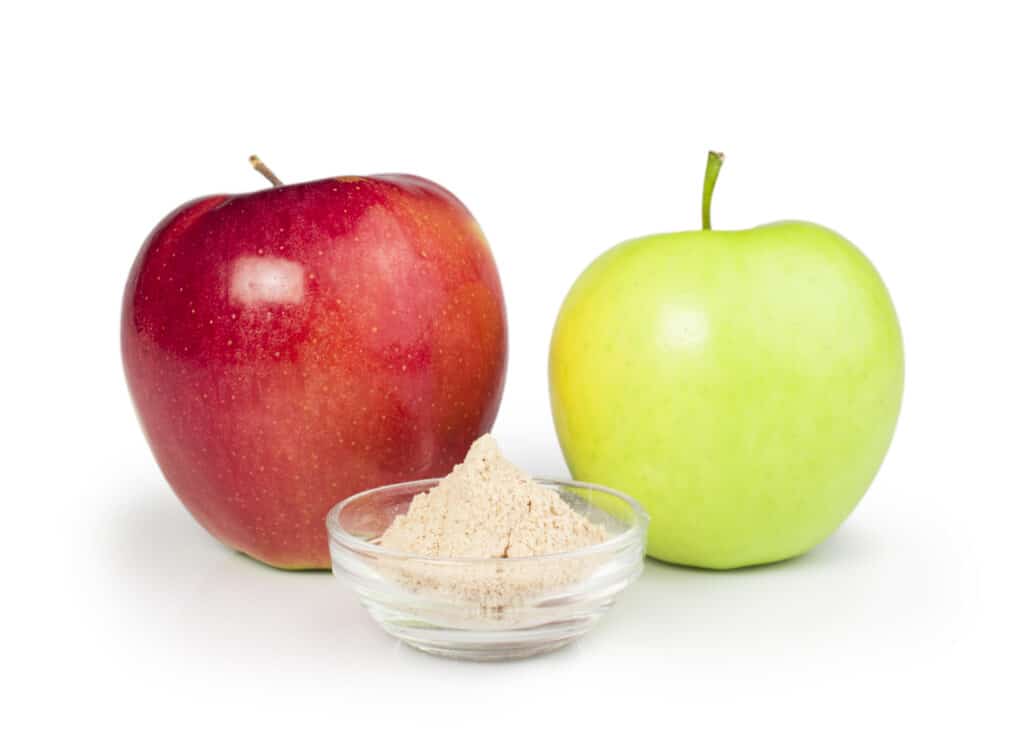
Tips for the best result
- Make sure you understand what you need in your recipe. You don’t want to add a thickening agent when what you really needed was a binder.
- Understand that many of these ingredients just need to be tested out to see if you like the taste, texture, and consistency they bring to your recipes. Some you may love and others you may hate.
- When working with a new ingredient, take it slow. It is easier to add more than to remove what you don’t need.
How to select a xanthan gum substitute
Here are some great questions you can ask yourself when choosing a substitute for xanthan gum to keep on hand.
What is the shelf life of the ingredient? Can you find it locally? Is it something you can have on hand for regular use? These questions will help you make sure you can find your replacement easily whenever you need it.
Will it change the color, flavor, odor, texture or consistency of your recipe? If yes, then you may want to consider a different alternative.
Can you use this replacement for more than one purpose? If the xanthan gum replacement can be a thickener, an emulsifier, and a stabilizer, that is your best option (like psyllium husk). However if you find you only use xanthan gum as a thickener, then you may just want to purchase corn starch.
I used cornstarch or cornflour to make these delicious recipes ; The Best Pan-Fried Crispy Tofu, Chicken Vermicelli and The CRISPIEST Roast Potatoes

FAQs
Xanthan gum plays a crucial role in gluten-free baking and cooking. Leaving it out of the recipe may change the texture and structure entirely. Instead, opt for one of the substitutes listed above.
Do not use xanthan gum if you are allergic or experience severe stomach upset.
No, baking powder and baking soda play entirely different roles in a recipe than xanthan gum.
I also used a thickener for the sauce when making these main course recipes ; Simple Pork Curry with Coconut Milk, Crispy Chilli Chicken (Healthy Fakeaway Chinese) and Chicken and Mushroom Pasta.
For more substitute articles…
12 Best Substitutes for Saffron : Cooking With Alternatives
11 Tomato Puree Substitutes In Your Pantry

